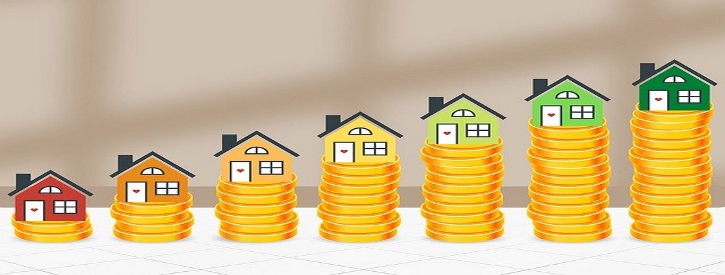It’s no secret that I live a minimalist lifestyle. I live in a minimalist apartment and love every minute of it. Yet, I now want to talk about building a stylish minimalist wardrobe!
I am in no way a fashion expert. Nor do I know the latest trends (and don’t care).
I am just an ordinary person who has some experience in having to discard and rebuild an entire wardrobe a couple of times over the last 5 years.
The main reason was because I was losing a lot of weight.
Over the years my clothes would increasingly become too big for me (or rather I was becoming to lean for my clothes). When I first moved into my apartment 5 years ago, I was wearing size 36 pants. Today, I fit comfortably in size 31 pants.
That should give you an idea of how much weight I lost. On top of that, I started eating better, walking to work and back (2.2 miles each way), and working out each day. I became quickly lean with larger muscle mass.
So, my wardrobe was a complete do-over the over the course of the last 5 years. In those past 5 years, I learned a few things and wish to share some of my experience.
Bear in mind, I am writing this from a man’s perspective. As such, certain things may not apply to women. However, there are plenty of generalities that apply to both men and women.
However, for men there is one rule that applies to building any stylish wardrobe:
Number One Rule for Men: Your clothes must fit!

Strictly speaking on style for men, your clothes must fit! We humans are visual creatures and we constantly judge each other based on appearance. That is reality. Appearance matters a lot!
Clothes that don’t fit will really bring down your image. Most often, it is because the clothes are too big for you. It gives that sloppy look.
I wish I had known that earlier. Even when I weighed more, I would always wear clothes that were one or two sizes too big for me. Looking at old pictures of myself, I can only shake my head in disbelief.
Make sure your clothes fit your body well. Well fitted clothes create an appealing silhouette of your body, especially if you are in shape and have that V-taper shape to your upper body.
Thus, this is the king rule of style. All else flows from this rule.
The Benefits of Having a Minimalist Wardrobe

1. Less expenses!
The average American family spends about $1,800 per year on clothing. The average person (age 25-34) spends $161 per month on clothing.
That is honestly way more then I ever spent on clothing in the past 5 years.
By adopting a more minimalist wardrobe, you will be able to save hundreds of dollars per year. If you take good care of your clothes, they can last years. Thus, reducing the need to buy more.
If you limit your clothes to what you need instead of every article of clothing you could potentially wear, you will save a pretty penny.
The best part is you don’t have to sacrifice quality, only quantity.
2. Less clutter, less hassle, and more time!
By adopting a minimalist wardrobe, you would free up lots of closet space, draw space, and (in many cases) floor space!
Living in a home with too much clutter has been shown by research to have negative effects on mental and physical health. Decluttering you house also declutters your mind.
When you limit you wardrobe to mainly essentials you free yourself from a lot of hassle of deciding what to wear each day. When there are too many options and choices to make, people often become paralyzed and indecisive.
All of that takes time.
Imagine each morning if you had to take 20 minutes (or longer) to figure out every variety of what you are going to wear. Then you find yourself rushing to get out the door to avoid being late.
It takes me less then 10 seconds to know what I am going to wear each day to work. No rushing, no stress, and no taking the equivalent time the night before to figure it out.
How to Build a Stylish Minimalist Wardrobe

1. Cleaning house
The first step to take in building a minimalist wardrobe to get rid of clothes.
Start by getting rid of clothes that don’t fit. Then get rid of old clothes that you don’t wear anymore. If any clothing items are in decent shape consider donating them.
That is how I started and twice I had a large trash bag full of clothes.
2. Determine your style
This could take some time and thought. What kind of person are you? Do you have a certain color scheme that you like? Is there someone whom you admire their style?
I can’t tell you what style you should have. And it doesn’t have to be 100% in any style type. It is up to you as an individual. However, here is a helpful guide in developing you own person style.
Once you have a style locked down, you can narrow your range of clothes purchases. And remember the golden rule: make sure the clothes fit.
In addition, take climate and location into consideration. If you live or are moving into a cold climate, it would be a good idea to have a sweater and winter coat. In a tropical climate, a pair of shorts and maybe a causal Hawaiian shirt.
Developing a personal style will likely be the hardest part, especially if you’ve never given it any thought before. I had to put a lot of thought into my style and refine my style over time.
3. Determine your budget
How much should you spend on clothing? There are no definite answers. Nevertheless, you do not need to spend $400 on a luxury brand shirt or $4,000 on a new suit.
You could easily buy inexpensive clothes at thrift stores or visit your local Target store for some clothes (not just saying that because I’m a shareholder).
Search online for shops that sell inexpensive clothes (make sure you know your measurements and what size you are if you do). For example, I got the bulk of my clothing from browsing Amazon.
Not all inexpensive clothes are good. If the material is poor then you just wasted your money.
Buying a $30 shirt is often many times better than $5 shirt.
It’s perfectly fine buying nice quality clothes, especially if you know they will last a long time. There is a difference between being cheap and being smart. Don’t skimp out on quality.
My Own Personal Example – A Minimalist Wardrobe
Using myself as an example, I prefer quality over quantity. Quality doesn’t come cheap, but it doesn’t have to be pricey either.
None of my draws are stuffed to the brim with clothes. Nor are my closets packed with clothes and shoes. Everything is minimal and sufficient.



I have 5 dress shirts for work (one for each work day), two pairs of black Khaki’s, two black belts, and three ties.
We have a workplace casual dress code at my job. And even though the dress code loosely (and rarely) enforced, I tend to dress up more then many of my other colleagues.
Outside work, I have 3 pairs of jeans, 4 Henley T-shirts, 3 pairs of shorts, two button down short-sleeve shirts, two button down long-sleeve shirts, and one long sleeve shirt. All are quite nice. I also have one Hawaiian shirt and a pair of swim trunks.
As you can tell based on my wardrobe, I tend to go out more in the summer and the milder spring and fall seasons. I don’t really go out much in the winter. Not a fan of the super cold (I know, yet I live in New York City).
I do own one sweater for the winter along with warm gloves, winter hat, and scarf.
I own 4 types of footwear: one pair of sneakers, one pair of dress shoes (which I keep at work), one pair of motorcycle boots, and one pair of heavy snow boots.
In addition, I own 4 types of jackets. One long winter coat for the cold weather, one rain coat, one light weight jacket, and a leather jacket.
As for accessories, I have 3 pairs of sunglasses, one necklace, and I wear a stylish watch (no it’s not a Rolex, it is Citizen’s brand).
And that is all there is to it. Even with a limited wardrobe, I can mix and mash colors for numerous varieties.
Conclusion

And there you have it, three steps to building a stylish minimalist wardrobe.
To make it even better, remember to take care of the clothes you wear. This way they will last longer and you will have to spend much less on clothes per year. Wash your clothes properly and fold them straight away.
Less is better then more. Quality is better than quantity.
Hope this helps the many of you looking to adopt a more minimalist lifestyle. It is definitely a path worth taking. Both for your personal finances and improving your quality of life.
So, what do you think of this post? Are you looking to trim your wardrobe? How much do you spend on clothes per year? Let me know in the comments below!
Also, don’t forget to Subscribe for more great content and updates! 
Like this:
Like Loading...



